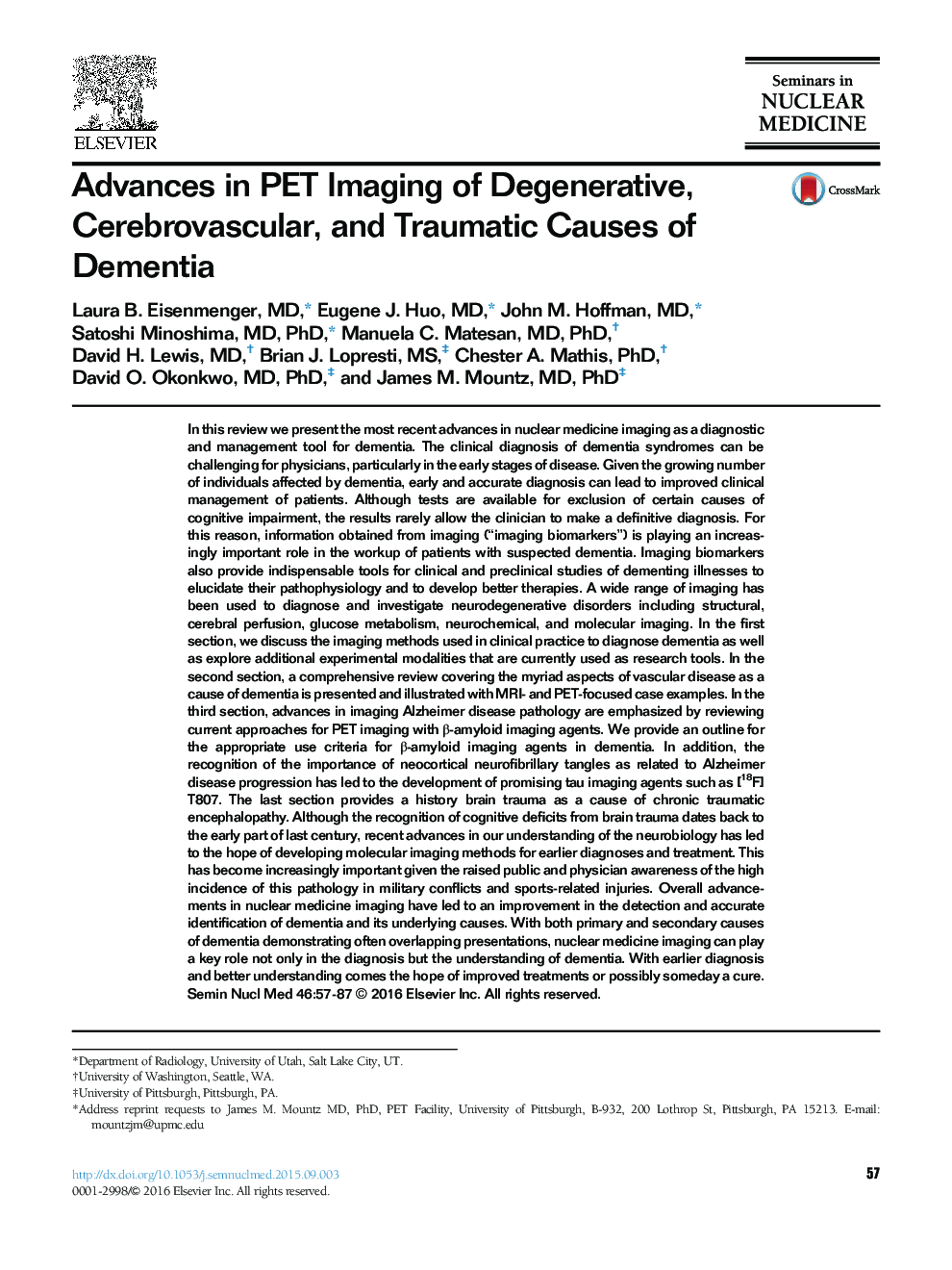| کد مقاله | کد نشریه | سال انتشار | مقاله انگلیسی | نسخه تمام متن |
|---|---|---|---|---|
| 4250845 | 1283932 | 2016 | 31 صفحه PDF | دانلود رایگان |

In this review we present the most recent advances in nuclear medicine imaging as a diagnostic and management tool for dementia. The clinical diagnosis of dementia syndromes can be challenging for physicians, particularly in the early stages of disease. Given the growing number of individuals affected by dementia, early and accurate diagnosis can lead to improved clinical management of patients. Although tests are available for exclusion of certain causes of cognitive impairment, the results rarely allow the clinician to make a definitive diagnosis. For this reason, information obtained from imaging (“imaging biomarkers”) is playing an increasingly important role in the workup of patients with suspected dementia. Imaging biomarkers also provide indispensable tools for clinical and preclinical studies of dementing illnesses to elucidate their pathophysiology and to develop better therapies. A wide range of imaging has been used to diagnose and investigate neurodegenerative disorders including structural, cerebral perfusion, glucose metabolism, neurochemical, and molecular imaging. In the first section, we discuss the imaging methods used in clinical practice to diagnose dementia as well as explore additional experimental modalities that are currently used as research tools. In the second section, a comprehensive review covering the myriad aspects of vascular disease as a cause of dementia is presented and illustrated with MRI- and PET-focused case examples. In the third section, advances in imaging Alzheimer disease pathology are emphasized by reviewing current approaches for PET imaging with β-amyloid imaging agents. We provide an outline for the appropriate use criteria for β-amyloid imaging agents in dementia. In addition, the recognition of the importance of neocortical neurofibrillary tangles as related to Alzheimer disease progression has led to the development of promising tau imaging agents such as [18F]T807. The last section provides a history brain trauma as a cause of chronic traumatic encephalopathy. Although the recognition of cognitive deficits from brain trauma dates back to the early part of last century, recent advances in our understanding of the neurobiology has led to the hope of developing molecular imaging methods for earlier diagnoses and treatment. This has become increasingly important given the raised public and physician awareness of the high incidence of this pathology in military conflicts and sports-related injuries. Overall advancements in nuclear medicine imaging have led to an improvement in the detection and accurate identification of dementia and its underlying causes. With both primary and secondary causes of dementia demonstrating often overlapping presentations, nuclear medicine imaging can play a key role not only in the diagnosis but the understanding of dementia. With earlier diagnosis and better understanding comes the hope of improved treatments or possibly someday a cure.
Journal: Seminars in Nuclear Medicine - Volume 46, Issue 1, January 2016, Pages 57–87